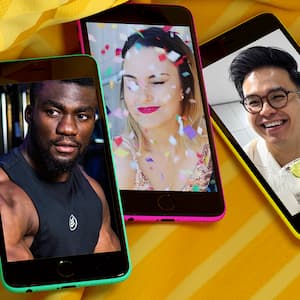This year sees the 40th anniversary of the Sydney Gay and Lesbian Mardi Gras, but it's also the 30th anniversary of the First Nations Mardi Gras float.
In 1988, the first float created by and dedicated solely to First Nations People was finally a part of Australia's biggest LGBTQIA+ event, and served as a protest of the 1988 bicentennial celebrations, as well as the country's lack of recognition of the 50,000+ years of Indigenous history.
The Revolution
Earlier this month, ACON confirmed that the 2018 First Nations float will be a dedication to one of the first-ever floats, which was themed 'Revolution'.
“The theme highlights that we can be successful in achieving equality in all LGBTQI communities around Australia, including Indigenous peoples," said Vanessa Orcher, First Nations Float Coordinator at ACON.
The 2018 bus will host a number of Elders, as well as Indigenous LGBTQIA+ community role models and allies, including Chair of the National Congress of Australia’s First Peoples, Jackie Huggins. It will also include a diverse group of Indigenous people of varied sexualities and gender identities, who have travelled from all over Australia in order to take part in the Mardi Gras anniversary celebrations.
The 'Revolution' float will stick to the original message of protest, calling for equality and a Treaty.
"We are working towards equality, acknowledging our past achievements through history and our continuing work today. Equality is needed regardless of race, culture, gender, sexuality, religion or marital status, in all areas of human rights and social justice. We need others to join with us and work together to achieve a Treaty, and equality around education health, and other opportunities."
Orcher added that in 2018, the float will be fronted "by an historical Aboriginal flag that was created by a group of our LGBTQI in the community."
1988
In 1988, the Sydney Morning Herald that the first float to represent First Nation Peoples would feature dancer Malcolm Cole dressed as Captain Cook — accompanied by Indigenous men dressed as Sir Joseph Banks and sailors — on top of a long boat, which would be pulled along the parade route by white men.
"It is enough trouble being black, let alone gay. That is why I am determined to put this float in the Mardi Gras," Cole told the outlet 30 years ago.
While Indigenous people waited a decade to witness the first official float, the community has had an impact on the Mardi Gras from the very beginning.
In the official , Allen Clarke reports in Indigenous LGBTQIA+ piece 'Eora Proud',
"As that first march made its way into Kings Cross in 1978 and the crowd police batons, the Koori community joined the fight. "A lot of blackfellas lived around Kings Cross and Woolloomooloo, and when they saw this police brutality happening they jumped in," says [curator of , Tim] Bishop. "So support was coming from outside the gay and lesbian community"."
A press release by Queers for Reconciliation reports that the 1980 Mardi Gras parade included a banner that read 'BLACK GAYS'.
In 1982, Narrandera man Roger McKay marched by himself while holding up the Aboriginal flag, reminding onlookers that the gay safe haven of Oxford Street was still on Aboriginal land. This is etched in history as the first time the Aboriginal flag was flown at Mardi Gras.
First Nations community member Rusty Nannup that when she attended her first Mardi Gras in 1986, she previously didn't know "what a Mardi Gras was", and initially believed her group wouldn't be able to pass security.
“We didn’t think we were going to get past the marshalls,” she says. “But we did!”
“All of a sudden we’re in the middle of the street with all these other people dancing around, screaming and whistling at us. We just rocked it,” said Nannup, adding that dancing along the parade route in high heels gave her "blisters for a week".



